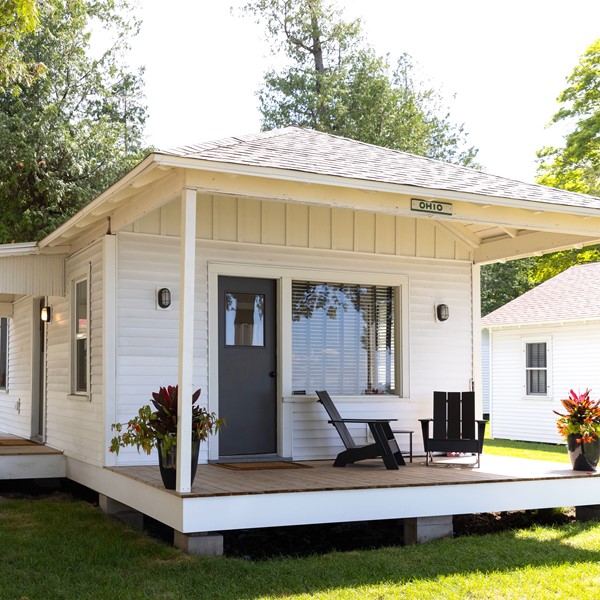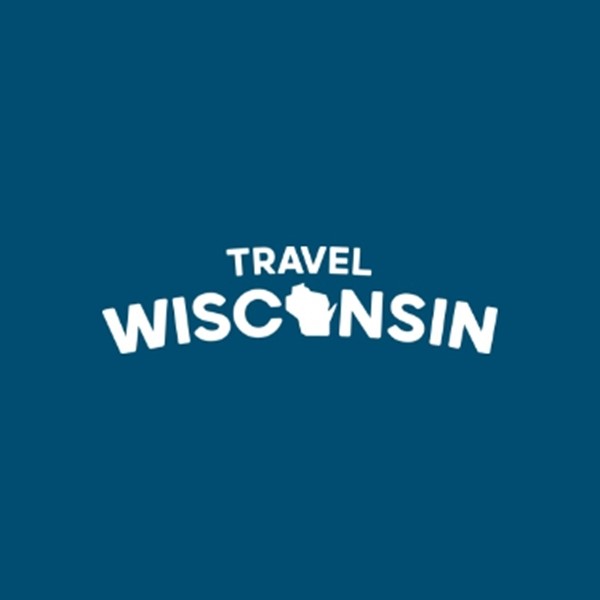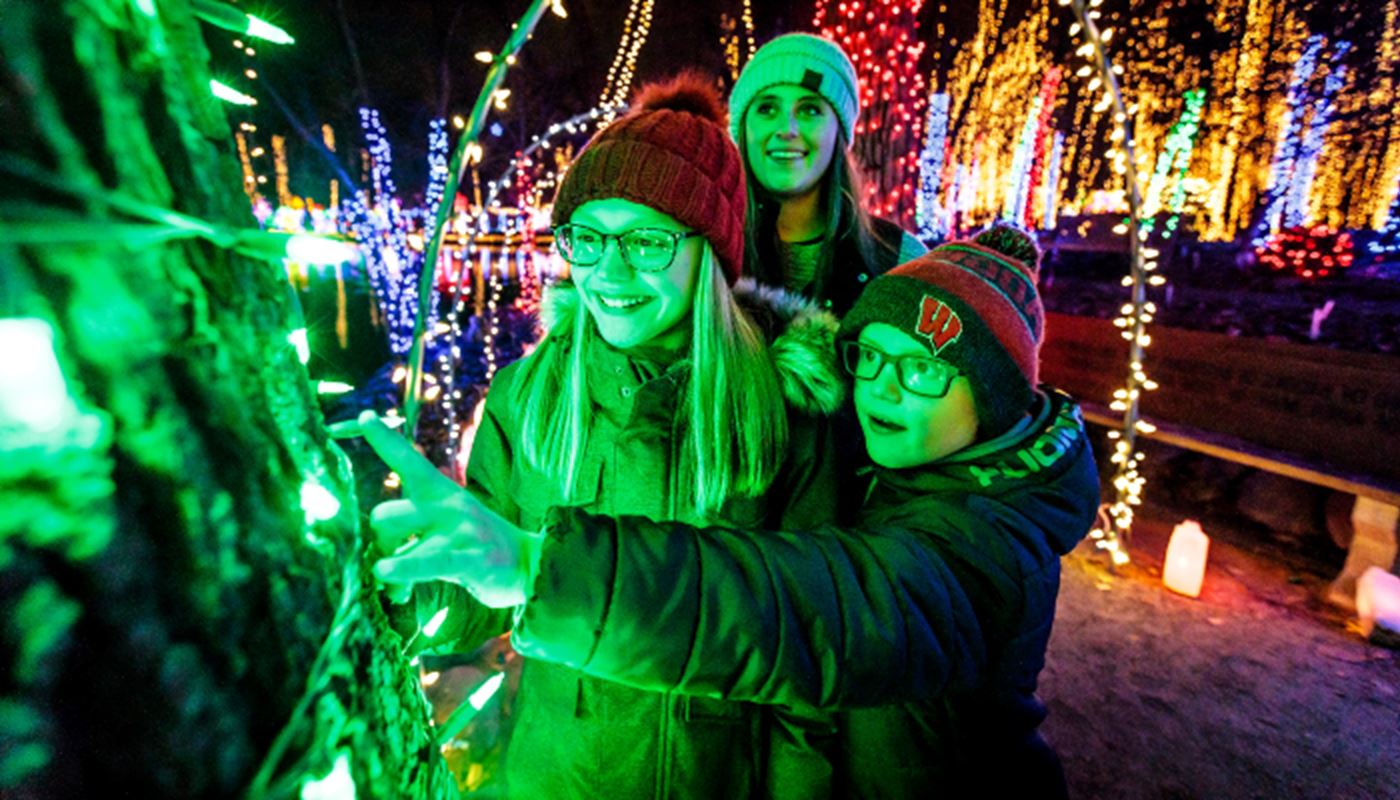
Experience Native American Culture in Wisconsin
You can’t truly say you know Wisconsin without knowing about the Native cultures that have existed here for thousands of years. Fortunately, the 11 federally recognized Native American Tribes in the state have created many cultural opportunities for travelers to experience. Here’s a guide that will help you get started.
The Oneida Nation
Oneida Nation Dancers gently stomp the ground while they demonstrate different styles of pow-wow dances. These include men and women’s traditional dances, men and women’s fancy dances and men’s grass and women’s jingle dress dances. While you watch the performers at the annual Oneida Powwow held in June, a member of the tribe explains the significance of each dance. This is a trip you can’t find anywhere else and won’t soon forget.
Afterward, you and your crew can tour the 6,000-acre Oneida Nation Farms outside of Green Bay, where a herd of grass-fed cattle and a flock of free-range chickens live a happy life. Native residents and the general public alike can purchase meat and poultry, eggs, organic veggies and berries. In the fall, visit the Oneida Nation Apple Orchard for McIntosh, Cortland and Honey Gold apples or choose from over 20 other varieties. Take time to visit the Buffalo Overlook too, where a herd of more than 100 American bison roam.
The Menominee Nation

The Menominee are known as “The Keepers of the Forest.” Their 235,000-acre reservation is 98 percent forested and operates as one of the most successful sustainable yield forests in the world. The Menominee Forest is so dense it can be seen distinctly from space, and NASA uses it as a reference point for taking satellite photographs.
Tours of the area can be arranged, but perhaps the best way to appreciate the Menominee's gorgeous forest is by taking a raft trip down the Wolf River with one of the Native outfitters such as Shotgun Eddy Rafts. Or, take a walk along the trail through the Dells of Wolf River to see the awe-inspiring carved stone landscape.
Check out the Menominee Indian Cultural and Logging Camp Museums, located along the banks of the Wolf River, where replica logging camp buildings contain thousands of camp artifacts.
The Potawatomi Nation
The showcase of this nation’s cultural experience is its Cultural Center, library and museum. The 2,700-square-foot exhibit is bilingual (English and Potawatomi) and was built with input from community elders as well as internationally-known museum designers. Life-size dioramas and video presentations illustrate the struggles and journeys the Tribe endured. The building is wheelchair-accessible and the gift shop includes handmade art and crafts for sale.
A ride out to Potawatomi Farm is a must. Take a walking tour of the 320-acre property near the heart of the Chequamegon-Nicolet National Forest, where the Tribe takes an environmentally conscious approach to raising many types of livestock and growing fruits and vegetables. Take home some grass-fed meat, free-range eggs and seasonal produce to enjoy.
Stockbridge-Munsee Band of the Mohican Nation
Members of the Stockbridge-Munsee Band have been displaced and moved so many times, pushed from the Eastern Seaboard across half a continent, that their tribal symbol is called “Many Trails.” Their reservation was carved out of the densely forested Menominee Reservation as recently as 1856, but not before the U.S. government clearcut the entire plot.
Visit the Arvid E. Miller Library & Museum which includes the model Wea Tauk Village, where visitors can see what tribal life was like in the past. A medicine teacher, a storyteller or dance and drumming demonstrations can be arranged in advance of a visit.
St. Croix Band of Lake Superior Chippewa

The highlight of the St. Croix Band experience is the Forts Folle Avoine Historical Park – a re-creation of a Woodland Indian village and fur trading post that was on this site between 1802 and 1805. Start at the 5,000-square-foot visitor center (which is wheelchair accessible) for some background about the nation’s centuries of history. Then, experience that history up close as you listen to guides dressed in the period’s fashion barter over furs as they did 200 years ago.
The village interpreter will take you through the various kinds of seasonal living arrangements of the Woodland Indians. At the trading post, the interpreter gives a general description of the fur trading industry with examples of what was traded and how. Tour the many reconstructed cabins to see the living arrangements, stop in at the blacksmith’s shop and peek inside the authentic Wigwam to be fully transported back in time.
For an adventure in the natural wonder, paddle the St. Croix National Scenic Riverway which offers 252 miles of recreational opportunities. There’s ample opportunity to hike, fish, camp, sail and golf in the summer and cross-country ski, snowshoe, ice fish and go snowmobiling in winter. The St. Croix National Scenic Riverway Center at St. Croix Falls is wheelchair accessible and has additional information about the area including a video with open captions, audio descriptions and assisted listening devices available.
Bad River Band of Superior Chippewa
The Bad River Band is one of six bands of the Lake Superior Band of Chippewa Indians - also referred to as the Anishinaabe, Chippewa or Ojibwe. This original group was forced to migrate from present-day eastern Canada and the United States to what is now known as Madeline Island in Lake Superior.
The Bad River Chippewa owns and operates a fish hatchery that stocks local rivers and lakes with 15 million walleye annually. You can visit the hatchery by contacting the Great Lakes Indian Fish and Wildlife Commission. Also located here is the only remaining extensive coastal wild rice marsh in the Great Lakes Region – the Kakagon and Bad River sloughs. Kakagon is the largest naturally grown wild rice bed in the world and is a registered National Natural Landmark. You’ll also find the largest eagle population in the Great Lakes here.
Come winter, the nation offers the Odanah Northern Lights Snowmobile Trail. This well-groomed trail adventure is the perfect weekend getaway and offers a unique opportunity to experience this special area.
The Ho-Chunk Nation
The Ho-Chunk Nation, or “People of the Big Voice,” is unique in that it is not located on one continuous land base within Wisconsin. Because of a treaty signed under suspicious conditions between the U.S. government and the Tribe in the early 1800s, the Ho-Chunk were forced to cede much of their land. Later on, the Tribe was able to reclaim portions of its land in 14 Wisconsin counties.
The Ho-Chunk Nation hosts two major Pow-Wows every year on Memorial Day and Labor Day that feature cultural dancing and drumming competitions. These popular events are held at the tribe’s Andrew Blackhawk Memorial Pow-Wow Grounds in Black River Falls. If you can’t make it to those events, plan a trip and stay at the scenic Ho-Chunk RV Resort and Campground just minutes from Wisconsin Dells and mix the best of both worlds with nature time and casino time.
Sokaogon (Mole Lake) Band of Lake Superior Chippewa
The Mole Lake tribe is also known as the Lost Tribe because of a legal title to their reservation that was lost in a shipwreck on Lake Superior in 1854. Today, the land area boasts hundreds of miles of snowmobile trails, as well as hiking and mountain biking trails, ATV trails and cross-country ski trails. There are over 800 lakes, 82 trout streams and 400,000 acres of public wilderness land teeming with wildlife.
Attend the Honor the Earth Homecoming Celebration and Powwow held each summer to learn more about the heritage and culture of both Sokaogon and other bands of Ojibwe Tribes.
Lac du Flambeau Band of Lake Superior Chippewa
Almost half of this nation’s reservation is made up of lakes, rivers and wetlands. You can fish for trout at the Lac du Flambeau Fish Hatchery daily from Memorial Day to Labor Day. Fish are bagged while you wait and no license or fishing pole is needed, just your hands and some concentration!
The Powell Marsh Wildlife Area is a 12,303-acre wildlife refuge, where you can hike, ski and snowshoe and enjoy nature. Included is 24,000 acres of wetlands, that have been named one of the top birding destinations in Wisconsin.
There are also 260 lakes and 65 miles of rivers and streams to paddle here. The Nation’s Lac du Flambeau Bike Trail also covers nearly 18 miles, connecting neighboring communities. Bring your bike or binoculars and immerse yourself in Wisconsin’s natural richness.
Take a hands-on approach to the state’s history at the George W. Brown Jr. Museum and Cultural Center, where classes are offered in traditions like native cooking and making birch-bark baskets. The museum is also wheelchair accessible.
Red Cliff Band of Lake Superior Chippewa
Guests can use the Tribal-owned Legendary Waters Buffalo Bay Campgrounds and Marina as a base for a visit and enjoy the breathtaking views of Lake Superior and the Apostle Islands. If you want to stay a while, choose from 48 lakeshore tent and RV sites. Or, head down to Point Detour to enjoy wilderness camping at 24 rustic sites. There are many miles of hiking trails as well as great fishing. Nearby, you can also visit Frog Bay Tribal National Park - the first of its kind in the United States.
Lac Courte Oreilles Band of Superior Chippewa
This Tribe operates The Landing – a family resort featuring a large dining room overlooking Lake Superior. Nine spacious cabins can accommodate guests (including one wheelchair-accessible cabin) and boat and pontoon rentals are available. Staying here also allows you to experience a powwow dance troupe every Wednesday evening throughout the summer.
Learn more about this Tribe and others by visiting these attractions: the Living Cultural Center at LCO Ojibwa Community College; Abijinoojii-Aki (meaning “Our Children's Land”), an Ojibwe Cultural Village located two blocks west of the Honor the Earth Powwow grounds; the 40-acre cranberry marsh; St. Francis Solanus Indian Mission (includes a Native American arts and crafts store); and the Lac Courte Oreilles Visitor’s Center, next to the Sevinwinds Casino. Tours are available for all of these.
To explore more of Wisconsin’s rich Native American culture, plan a visit to one of these ancient earthworks.
Deals










